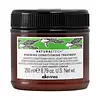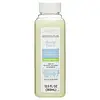What's inside
What's inside
 Key Ingredients
Key Ingredients

 Benefits
Benefits

 Concerns
Concerns

 Ingredients Side-by-side
Ingredients Side-by-side

Water
Skin ConditioningCetearyl Alcohol
EmollientGlycerin
HumectantBehentrimonium Chloride
PreservativeCetyl Alcohol
EmollientCetrimonium Chloride
AntimicrobialPolyglyceryl-4 Oleate
EmulsifyingParfum
MaskingGlyceryl Stearate
EmollientBeheneth-25
CleansingSimmondsia Chinensis Seed Oil
EmollientBenzyl Alcohol
PerfumingPentaerythrityl Tetra-Di-T-Butyl Hydroxyhydrocinnamate
AntioxidantIsopropyl Alcohol
SolventGlyceryl Olivate
EmollientHydroxyethylcellulose
Emulsion StabilisingSodium Benzoate
MaskingAristotelia Chilensis Fruit Extract
Skin ConditioningSpinacia Oleracea Leaf Extract
Skin ConditioningHydrogenated Rapeseed Alcohol
EmollientCitric Acid
BufferingHexyl Cinnamal
PerfumingTocopherol
AntioxidantDisodium EDTA
Limonene
PerfumingSclerotium Gum
Emulsion StabilisingCarnosine
Skin ConditioningPotassium Sorbate
PreservativeWater, Cetearyl Alcohol, Glycerin, Behentrimonium Chloride, Cetyl Alcohol, Cetrimonium Chloride, Polyglyceryl-4 Oleate, Parfum, Glyceryl Stearate, Beheneth-25, Simmondsia Chinensis Seed Oil, Benzyl Alcohol, Pentaerythrityl Tetra-Di-T-Butyl Hydroxyhydrocinnamate, Isopropyl Alcohol, Glyceryl Olivate, Hydroxyethylcellulose, Sodium Benzoate, Aristotelia Chilensis Fruit Extract, Spinacia Oleracea Leaf Extract, Hydrogenated Rapeseed Alcohol, Citric Acid, Hexyl Cinnamal, Tocopherol, Disodium EDTA, Limonene, Sclerotium Gum, Carnosine, Potassium Sorbate
Water
Skin ConditioningGlycerin
HumectantIsopropyl Palmitate
EmollientCetearyl Alcohol
EmollientBehentrimonium Chloride
PreservativeGlyceryl Stearate Se
EmulsifyingStearyl Alcohol
EmollientStearamidopropyl Dimethylamine
EmulsifyingPhenoxyethanol
PreservativeParfum
MaskingHamamelis Virginiana Water
AstringentButyrospermum Parkii Butter
Skin ConditioningOlea Europaea Fruit Oil
MaskingCocos Nucifera Oil
MaskingGuar Hydroxypropyltrimonium Chloride
Skin ConditioningPersea Gratissima Oil
Skin ConditioningPrunus Amygdalus Dulcis Oil
Skin ConditioningBenzyl Alcohol
PerfumingCitric Acid
BufferingBrassica Alcohol
EmollientCetyl Esters
EmollientEthylhexylglycerin
Skin ConditioningBehentrimonium Methosulfate
Dehydroacetic Acid
PreservativeBenzoic Acid
MaskingSorbic Acid
PreservativeBrassica Oleracea Acephala Leaf Extract
HumectantAlcohol
AntimicrobialPropanediol
SolventMalt Extract
Skin ProtectingBrassica Oleracea Capitata Leaf Extract
Skin ConditioningCurcuma Longa Root Extract
MaskingSodium Bicarbonate
AbrasiveCarthamus Tinctorius Seed Oil
MaskingCucumis Sativus Fruit Extract
EmollientCitrus Limon Peel Extract
EmollientCitrus Grandis Seed Extract
AstringentPanthenol
Skin ConditioningVaccinium Myrtillus Fruit/Leaf Extract
AstringentSaccharum Officinarum Extract
MoisturisingCitrus Aurantium Dulcis Fruit Extract
MaskingCitrus Limon Fruit Extract
MaskingAcer Saccharum Extract
Skin ConditioningZingiber Officinale Root Extract
MaskingGlycine Soja Oil
EmollientBrassica Oleracea Italica Seed Oil
EmollientMedicago Sativa Extract
TonicCitrus Grandis Fruit Extract
AstringentPyrus Malus Fruit Extract
Skin ConditioningSpinacia Oleracea Leaf Extract
Skin ConditioningWater, Glycerin, Isopropyl Palmitate, Cetearyl Alcohol, Behentrimonium Chloride, Glyceryl Stearate Se, Stearyl Alcohol, Stearamidopropyl Dimethylamine, Phenoxyethanol, Parfum, Hamamelis Virginiana Water, Butyrospermum Parkii Butter, Olea Europaea Fruit Oil, Cocos Nucifera Oil, Guar Hydroxypropyltrimonium Chloride, Persea Gratissima Oil, Prunus Amygdalus Dulcis Oil, Benzyl Alcohol, Citric Acid, Brassica Alcohol, Cetyl Esters, Ethylhexylglycerin, Behentrimonium Methosulfate, Dehydroacetic Acid, Benzoic Acid, Sorbic Acid, Brassica Oleracea Acephala Leaf Extract, Alcohol, Propanediol, Malt Extract, Brassica Oleracea Capitata Leaf Extract, Curcuma Longa Root Extract, Sodium Bicarbonate, Carthamus Tinctorius Seed Oil, Cucumis Sativus Fruit Extract, Citrus Limon Peel Extract, Citrus Grandis Seed Extract, Panthenol, Vaccinium Myrtillus Fruit/Leaf Extract, Saccharum Officinarum Extract, Citrus Aurantium Dulcis Fruit Extract, Citrus Limon Fruit Extract, Acer Saccharum Extract, Zingiber Officinale Root Extract, Glycine Soja Oil, Brassica Oleracea Italica Seed Oil, Medicago Sativa Extract, Citrus Grandis Fruit Extract, Pyrus Malus Fruit Extract, Spinacia Oleracea Leaf Extract
Ingredients Explained
These ingredients are found in both products.
Ingredients higher up in an ingredient list are typically present in a larger amount.
This ingredient is a preservative and often used for it's anti-static properties. You'll most likely see this ingredient in hair conditioners.
It does not cause irritation or sensitization in leave-on products at 1-5%.
Benzyl Alcohol is most commonly used as a preservative. It also has a subtle, sweet smell. Small amounts of Benzyl Alcohol is not irritating and safe to use in skincare products. Most Benzyl Alcohol is derived from fruits such as apricots.
Benzyl Alcohol has both antibacterial and antioxidant properties. These properties help lengthen the shelf life of products. Benzyl Alcohol is a solvent and helps dissolve other ingredients. It can also improve the texture and spreadability.
Alcohol comes in many different forms. Different types of alcohol will have different effects on skin. This ingredient is an astringent alcohol.
Using high concentrations of these alcohols are drying on the skin. They may strip away your skin's natural oils and even damage your skin barrier. Astringent alcohols may also irritate skin.
Other types of astringent alcohols include:
According to the National Rosacea Society based in the US, you should be mindful of products with these alcohols in the top half of ingredients.
Any type of sanitizing product will have high amounts of alcohol to help kill bacteria and viruses.
Learn more about Benzyl AlcoholCetearyl alcohol is a mixture of two fatty alcohols: cetyl alcohol and stearyl alcohol. It is mainly used as an emulsifier. Emulsifiers help prevent the separation of oils and products. Due to its composition, it can also be used to thicken a product or help create foam.
Cetearyl alcohol is an emollient. Emollients help soothe and hydrate the skin by trapping moisture.
Studies show Cetearyl alcohol is non-toxic and non-irritating. The FDA allows products labeled "alcohol-free" to have fatty alcohols.
This ingredient is usually derived from plant oils such as palm, vegetable, or coconut oils. There is debate on whether this ingredient will cause acne.
Due to the fatty acid base, this ingredient may not be Malassezia folliculitis safe.
Learn more about Cetearyl AlcoholCitric Acid is an alpha hydroxy acid (AHA) naturally found in citrus fruits like oranges, lemons, and limes.
Like other AHAs, citric acid can exfoliate skin by breaking down the bonds that hold dead skin cells together. This helps reveal smoother and brighter skin underneath.
However, this exfoliating effect only happens at high concentrations (20%) which can be hard to find in cosmetic products.
Due to this, citric acid is usually included in small amounts as a pH adjuster. This helps keep products slightly more acidic and compatible with skin's natural pH.
In skincare formulas, citric acid can:
While it can provide some skin benefits, research shows lactic acid and glycolic acid are generally more effective and less irritating exfoliants.
Most citric acid used in skincare today is made by fermenting sugars (usually from molasses). This synthetic version is identical to the natural citrus form but easier to stabilize and use in formulations.
Read more about some other popular AHA's here:
Learn more about Citric AcidGlycerin is already naturally found in your skin. It helps moisturize and protect your skin.
A study from 2016 found glycerin to be more effective as a humectant than AHAs and hyaluronic acid.
As a humectant, it helps the skin stay hydrated by pulling moisture to your skin. The low molecular weight of glycerin allows it to pull moisture into the deeper layers of your skin.
Hydrated skin improves your skin barrier; Your skin barrier helps protect against irritants and bacteria.
Glycerin has also been found to have antimicrobial and antiviral properties. Due to these properties, glycerin is often used in wound and burn treatments.
In cosmetics, glycerin is usually derived from plants such as soybean or palm. However, it can also be sourced from animals, such as tallow or animal fat.
This ingredient is organic, colorless, odorless, and non-toxic.
Glycerin is the name for this ingredient in American English. British English uses Glycerol/Glycerine.
Learn more about GlycerinParfum is a catch-all term for an ingredient or more that is used to give a scent to products.
Also called "fragrance", this ingredient can be a blend of hundreds of chemicals or plant oils. This means every product with "fragrance" or "parfum" in the ingredients list is a different mixture.
For instance, Habanolide is a proprietary trade name for a specific aroma chemical. When used as a fragrance ingredient in cosmetics, most aroma chemicals fall under the broad labeling category of “FRAGRANCE” or “PARFUM” according to EU and US regulations.
The term 'parfum' or 'fragrance' is not regulated in many countries. In many cases, it is up to the brand to define this term.
For instance, many brands choose to label themselves as "fragrance-free" because they are not using synthetic fragrances. However, their products may still contain ingredients such as essential oils that are considered a fragrance by INCI standards.
One example is Calendula flower extract. Calendula is an essential oil that still imparts a scent or 'fragrance'.
Depending on the blend, the ingredients in the mixture can cause allergies and sensitivities on the skin. Some ingredients that are known EU allergens include linalool and citronellol.
Parfum can also be used to mask or cover an unpleasant scent.
The bottom line is: not all fragrances/parfum/ingredients are created equally. If you are worried about fragrances, we recommend taking a closer look at an ingredient. And of course, we always recommend speaking with a professional.
Learn more about ParfumWater. It's the most common cosmetic ingredient of all. You'll usually see it at the top of ingredient lists, meaning that it makes up the largest part of the product.
So why is it so popular? Water most often acts as a solvent - this means that it helps dissolve other ingredients into the formulation.
You'll also recognize water as that liquid we all need to stay alive. If you see this, drink a glass of water. Stay hydrated!
Learn more about Water